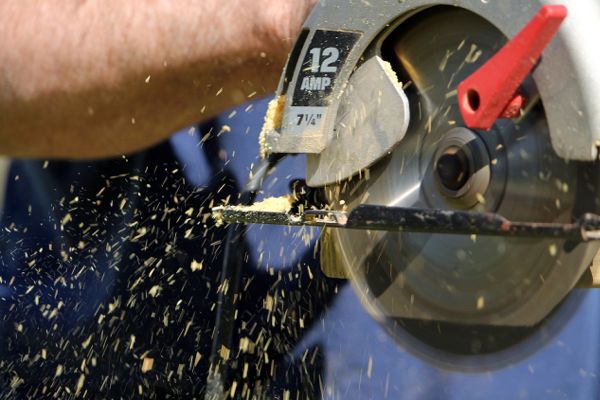Hand & Power Tools

HAND & POWER TOOLS – AMPUTATION HAZARDS
What are the sources of amputations in the workplace?
Amputations are some of the most serious and debilitating workplace injuries. They are widespread and involve a variety of activities and equipment. Amputations occur most often when workers operate unguarded or inadequately safeguarded mechanical power presses, power press brakes, powered and non-powered conveyors, printing presses, roll-forming and roll-bending machines, food slicers, meat grinders, meat-cutting band saws, drill presses, and milling machines as well as shears, grinders, and slitters. These injuries also happen during materials handling activities and when using forklifts and doors as well as trash compactors and powered and non-powered hand tools. Besides normal operation, the following activities involving stationary machines also expose workers to potential amputation hazards: setting up, threading, preparing, adjusting, cleaning, lubricating, and maintaining machines as well as clearing jams.
What types of machine components are hazardous?
The following types of mechanical components present amputation hazards:
- Point of operation—the area of a machine where it performs work on material.
- Power-transmission apparatuses—flywheels, pulleys, belts, chains, couplings, spindles, cams, and gears in addition to connecting rods and other machine components that transmit energy.
- Other moving parts—machine components that move during machine operation such as reciprocating, rotating, and transverse moving parts as well as auxiliary machine parts.
What kinds of mechanical motion are hazardous?
All mechanical motion is potentially hazardous. In addition to in-running nip points (“pinch points”)—which occur when two parts move together and at least one moves in a rotary or circular motion that gears, rollers, belt drives, and pulleys generate—the following are the most common types of hazardous mechanical motion:
- Rotating—circular movement of couplings, cams, clutches, flywheels, and spindles as well as shaft ends and rotating collars that may grip clothing or otherwise force a body part into a dangerous location.
- Reciprocating—back-and-forth or up-and down action that may strike or entrap a worker between a moving part and a fixed object.
- Transversing—movement in a straight, continuous line that may strike or catch a worker in a pinch or shear point created between the moving part and a fixed object.
- Cutting—action generated during sawing, boring, drilling, milling, slicing, and slitting.
- Punching—motion resulting when a machine moves a slide (ram) to stamp or blank metal or other material.
- Shearing—movement of a powered slide or knife during metal trimming or shearing.
- Bending—action occurring when power is applied to a slide to draw or form metal or other materials.
Work practices, employee training, and administrative controls can help prevent and control amputation hazards. Machine safeguarding with the following equipment is the best way to control amputations caused by stationary machinery:
- Guards provide physical barriers that prevent access to hazardous areas. They should be secure and strong, and workers should not be able to bypass, remove, or tamper with them. Guards should not obstruct the operator’s view or prevent employees from working.
- Devices help prevent contact with points of operation and may replace or supplement guards. Devices can interrupt the normal cycle of the machine when the operator’s hands are at the point of operation, prevent the operator from reaching into the point of operation, or withdraw the operator’s hands if they approach the point of operation when the machine cycles. They must allow safe lubrication and maintenance and not create hazards or interfere with normal machine operation. In addition, they should be secure, tamper resistant, and durable.
